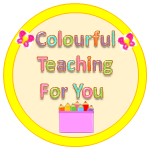
Today we’re going to talk about one simple strategy to engage children in reading comprehension.
Before I continue, since it’s back to school time, if you’d like FREE resources for your class, like a way to help your children get to know each other, visit my Free Resource Library.
Reading is essential in developing a child’s imagination in stimulating their memory. If encouraged to read a variety of books, children have the ability to choose from a wide array of genres, thereby increasing their enjoyment of reading and strengthening their reading habits.
This doesn’t have to be boring or difficult. In fact, it can be pretty simple and a great deal of fun.

In order to really enable you to differentiate this and make the most out of this strategy, I’m going to give to provide you with a variety of exercises that you can do with your students.
As well, this session will be a two-part series to ensure that you get the most out of it so that you have a variety of options to choose from depending on your students’ learning needs.
So, let’s get started:
Reading Strategy:
This particular strategy can be used for both elementary and secondary school children. So, stick around and let me show you how.
The strategy is, something you already know about, Read Aloud.
Now hear me out. Let’s have some fun with it.
If you’d like a read aloud book to help your children make new friends, check out Louis and Denzil: Making a New Friend.
Actionable Steps:
#1. The Initial Piece
If you’re teaching a primary grade, choose a picture book to read out loud to your students.
If you teach intermediate or secondary school, you may read from a picture book OR choose a passage from a novel or an assignment that you’re currently working on.
This is a great way to either, teach or review new terms and concepts.
Before you start reading to your children, give them a task: ask them to draw out something that’s related to what you want to teach your students. Perhaps it’s about teaching them about their emotions, a specific idea and so much more.
You can also have children write out different terms if they choose.
As you read to your students, use this as an opportunity to enhance their learning by asking them probing questions about the book.
This caters to different forms of learning and gives children a choice in their learning.
#2. The Revised Piece
Once you’re done reading, to your students, give them a few minutes to finish their drawings.
Then, have them either silent or partner read the same story or passage to ensure a deeper understanding of the topic. This also enables them to practice their language skills, allows for deeper level thinking, and it’s a great way for students to learn how to work together if they are partner reading.
Upon completion of the reading, give students time to add to their drawing.
#3. The Final Piece
Once your children have finalized their artwork, have them leave their work on their desks and tuck in their chairs.
Then, have them walk about the room so that they can admire each other’s work and learn from one another.
Students may then be given the opportunity to added to their final piece.
#4. The Moveable Piece
Now let’s add some real excitement to our lesson.
Ask your students to stand up and move to the outside perimeter of the classroom.
Give them a few minutes to think about a word that from the story or passage that stood out to them. Then have them think about an action that they can perform that describes the word.
When everyone’s ready, go around the room, have each child say their word followed by the action. As soon as one child does it, the rest of the class must repeat the word and action too.
This adds a kinesthetic aspect to your lesson. It helps improve your students’ memory of the story, and develops language skills. This is especially important for ELL learners or those who need brain breaks. I recommend using this in both, elementary and secondary school.
Recap:
- We talked about the importance of reading and reading comprehension.
- We focused on one specific strategy: read alouds.
- We then broke that down in the first four parts to enhance reading comprehension in your class: the initial piece, the revised piece, the final piece and the moveable piece.
- We also looked at how this can be used in both elementary and secondary school, as well as the importance of it various learning and special needs.
Additional Thoughts:
I hope this helps you.
Next week we will delve deeper into reading comprehension strategies. I’ll also be creating something special for you to go along with both, this episode and the following one next week. I hope to see you there.
In the meantime, if you’re interested in a FREE reflection writing prompts, visit my Free Resource Library.
If you’d like additional resources for your classroom here are the three ways you can access them: 1) Free Resource Library; 2) At my store; or 3) The Creative Child Community.
Next Steps:
If you found this video beneficial, would you do me a favour? Share this with your family, your friends, your loved ones, your co-workers or someone who you think could benefit from this. Thank you!
I’ll see you next Friday at 5:30pm PST.
Until I see you next time, remember to create, experience & teach from the heart.
Take care,
Charlotte


